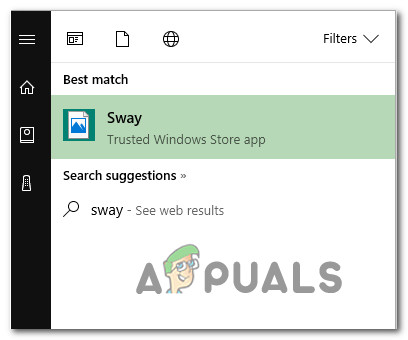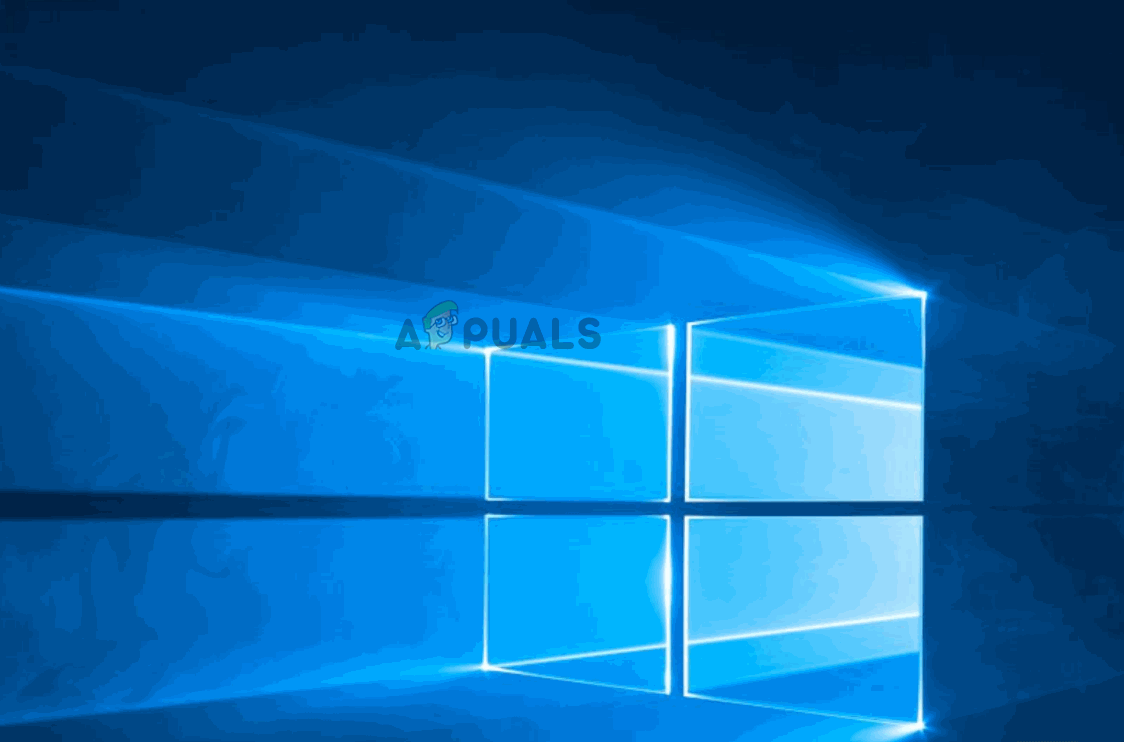Fix: Icons not showing Correctly in Windows Search
Some Windows 10 users have been struggling to resolve a weird issue where all Microsoft Office icons are not displayed when searching for a specific application using the Start menu. Most affected users are reporting that the icon is displayed correctly when they manually navigate to the app using the Start menu, but not when using the search function. The issue seems to be exclusive to Windows 10.

While some users report that the issue is only occurring with Office programs, other users have said that the issue also happens with other 3rd party programs.
What is causing the Office icons to stop showing up correctly on Windows 10?
We investigated this particular issue by looking at various user reports and the repair strategies that are commonly used to fix this particular issue. Based on what we gathered, there are several different scenarios that are known to trigger this particular error message:
- Windows is not configured to save taskbar thumbnail previews – As a lot of users have reported, this particular issue can occur if your operating system is configured to avoid saving taskbar thumbnail previews. Upon checking this option, several affected users have reported that the issue was resolved.
- The icon cache file is glitched – There’s one recurring glitch that has plagued Windows 10 since it’s launch. This issue can also occur if the icon cache file has become corrupted. If this scenario is applicable, you can resolve the issue by rebuilding the icon cache or changing the icon cache to force a reset.
If you’re currently struggling to resolve this particular issue, this article will present you with several different troubleshooting strategies. Down below, you’ll discover a collection of methods that other users in a similar situation have successfully deployed in order to fix the problem.
While not every method might be applicable to your scenario, it’s worth it to follow every potential fix in order and exclude those that are not applicable. Let’s begin!
Method 1: Enabling Save taskbar thumbnail previews
For this particular issue, the most popular fix is to ensure force your operating system to start saving taskbar thumbnail previews. According to most affected users, this procedure will end up forcing Windows 10 to display the correct icon when you search for an application using the start menu.
Keep in mind that this setting we are going to modify is disabled by default and you’ll need to operate a change from the System Properties menu. Here’s a quick guide on how to do this:
- Press Windows key + R to open up a Run dialog box. Then, type “sysdm.cpl” and press Enter to open up the System Properties menu.
- Inside the System Properties menu, go to the Advanced tab and click on the Settings button associated with the Performance section.
- Inside the Performance Options menu, go to the Visual Effects tab, set the toggle to Custom.
- Then, check the box associated with Save taskbar thumbnail previews and hit Apply to save the changes.
- Restart your computer and see if the icon issue has been resolved.

If you’re still having issues with the way your Office icons (or other icons) get displayed when you search for something using the Start menu, scroll down to the next method below.
Method 2: Changing the icon scale
Some affected users have managed to fix this issue by changing the icon scale to 125%. The default value is 100%, but don’t worry – Even if you don’t like the new size, you can then revert to the default value (after the fix was applied) and it will remain fixed.
Here’s a quick guide on changing the icon scale in order to fix the broken start icons:
- Press Windows key + R to open up a Run dialog box. Inside the box, type “ms-settings:easeofaccess-display” and hit Enter to open the Display tab of the Settings app.
- Inside the Display tab, scroll down to the Make everything bigger tab and change the drop-down menu under Change the size of apps to 125%.
- Restart your computer.
- Once the next startup is complete, see if the icons are displaying correctly.
Note: Regardless of the outcome (if this fix was successful or not) you can return to the Display tab and change the size of the apps back to 100%.

If the issue is still not resolved, move down to the next method below.
Method 3: Rebuilding the Icon Cache using Command Prompt
Icons that you see displaying inside the Start menu are actually saved inside an icon cache so that they can be retrieved quickly when needed. However, there are instances where this cache icon file becomes corrupted, causing all (or some) icons to display incorrectly.
Some affected users that have been struggling with this exact issue have reported that they managed to fix the problem indefinitely after they rebuilt the icon cache.
Note: The steps below are only applicable to Windows 10.
Here’s a quick way on how to do this from an elevated Command Prompt:
- Press Windows key + R to open up a Run dialog box. Then, type “cmd” and press Ctrl + Shift + Enter to open up an elevated Command Prompt. When prompted by the UAC (User Account Control) window, click Yes to grant administrative privileges.

Running CMD using the Run Dialog Box - Inside the elevated Command Prompt, type the following commands in order and press Enter after each one:
ie4uinit.exe -show taskkill /IM explorer.exe /F DEL /A /Q "%localappdata%\IconCache.db" DEL /A /F /Q "%localappdata%\Microsoft\Windows\Explorer\iconcache*" shutdown /r /f /t 00
Note: Be advised that the last command will instantly restart your computer. So make sure to save any data that is not stored before running these commands.
- At the next startup, check if the icons are displaying correctly.




